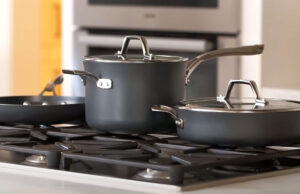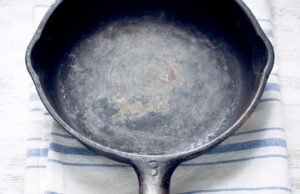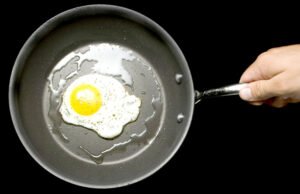As an Amazon Associate, I earn from qualifying purchases at no extra cost to you.
Miele G646 SC Plus Dishwasher Troubleshooting Made Simple
Are you frustrated because your Miele G646 SC Plus dishwasher is not working as it should? Don’t worry! Many owners face small issues that can be fixed quickly. This guide will help you understand common problems, solve them easily, and get your dishwasher running like new again.
Key Takeaways
Understanding your Miele G646 SC Plus dishwasher can save you time and money. First, know the most common problems, like water not filling, dishes not drying, or error codes showing. Second, follow clear and safe troubleshooting tips step by step. Third, maintain your dishwasher regularly to avoid future issues. Finally, keep your dishwasher clean, check filters often, and never ignore strange noises. With these tips, you can fix small issues at home without stress.
How to Fix Your Miele G646 SC Plus Dishwasher Easily
Check Water Supply and Inlet
The first thing to check is the water supply. Make sure the water tap connected to your dishwasher is fully open. Sometimes, a partially closed tap reduces water pressure, which prevents your dishwasher from filling. Also, check the inlet hose for kinks or bends. If water cannot flow freely, the dishwasher may not start or fill properly.
Next, inspect the inlet filter. Sediment or small debris can block water flow, causing errors or incomplete washing. Remove the hose, clean the filter gently, and reattach it. Turn on the tap and run a short cycle to check if water fills correctly. If water still does not enter, the inlet valve might need replacement.
Always ensure connections are tight to avoid leaks. A loose connection can reduce pressure and even damage the valve over time. Remember to check both ends of the hose carefully. By keeping the water supply clean and free-flowing, your dishwasher will perform much better.
- Ensure water tap is fully open
- Check inlet hose for kinks
- Clean the inlet filter
- Tighten all hose connections
- Replace valve if needed
Inspect and Cleaning Filters
Filters are essential for proper washing and drainage. Dirty or clogged filters can cause dishes to stay dirty or water to drain slowly. Begin by opening the dishwasher and removing the bottom rack. Take out the filters carefully.
Rinse them under running water to remove food particles and grease. For stubborn dirt, use a soft brush. Avoid metal brushes, as they can damage the filter. After cleaning, inspect for cracks or wear. A damaged filter should be replaced immediately.
Next, clean the area under the filters inside the dishwasher. Sometimes food debris collects there and blocks water flow. Put the filters back in place properly, making sure they fit snugly. Run a short rinse cycle to confirm everything works. Regular cleaning of filters prevents many common issues and keeps your dishwasher efficient.
- Remove bottom rack
- Take out filters and rinse
- Brush stubborn dirt gently
- Check for damage and replace if needed
- Clean under the filters
Check Drainage and Pump
Sometimes, water does not drain properly. This can leave puddles at the bottom or cause error codes. First, examine the drain hose to make sure it is not kinked or clogged. If it is blocked, remove debris carefully.
Next, check the pump area. Many Miele dishwashers have a pump cover near the filter. Open the cover and look for small objects, like bits of glass or food, that may block the pump. Remove anything you find. Make sure the pump impeller can rotate freely.
After cleaning, reassemble everything and run a short cycle. If water still does not drain, the pump might need professional replacement. Remember, cleaning the drain system often solves most drainage problems and prevents expensive repairs.
- Check drain hose for kinks
- Remove debris from hose
- Inspect pump area and impeller
- Remove objects blocking flow
- Test with a short cycle
Resolve Error Codes
Miele dishwashers often display error codes to indicate problems. Understanding these codes can save time and prevent further damage. Common codes include water fill issues, drainage errors, or temperature problems.
Start by checking the manual for the exact code meaning. For example, “E1” usually indicates a water supply problem. Make sure water tap is open, inlet hose is clean, and filter is clear. If the error continues, reset the dishwasher by turning it off and on.
For persistent errors, inspect the relevant parts carefully. Avoid ignoring codes because they signal important issues. Regular maintenance and timely troubleshooting can prevent these errors from appearing frequently. Keeping a small notebook of error codes and solutions helps you track and resolve problems faster.
- Refer to manual for error codes
- Check water supply and filters
- Reset dishwasher
- Inspect affected parts
- Track codes for future reference
Examine Spray Arms
Spray arms are key to cleaning dishes properly. If your dishes are still dirty, check the spray arms for clogs. Remove them according to the manual and rinse under running water. Small holes may have hardened food or mineral deposits.
Use a toothpick or small brush to clear blocked holes. Avoid forcing anything that can damage the plastic. After cleaning, rotate the arms manually to make sure they spin freely. A stuck spray arm reduces water coverage, leaving dishes dirty.
Finally, reinstall the spray arms securely. Run a short cycle to check if water sprays evenly. Proper spray arm maintenance ensures every dish gets cleaned and prevents repeated problems in the future.
- Remove spray arms
- Rinse under running water
- Clear blocked holes
- Check rotation
- Reinstall securely
Maintain and Clean Dishwasher Interior
A clean interior helps your dishwasher work efficiently. Wipe down the walls and door seal regularly to remove residue. Use a soft cloth and mild detergent to avoid damage.
Also, clean the detergent dispenser. Old detergent buildup can prevent proper cleaning. Check rubber seals and hinges for mold or dirt. If seals are dry, apply a small amount of food-safe silicone to prevent cracking.
Run a cleaning cycle with dishwasher cleaner monthly. This removes grease, lime scale, and odors. Keeping the interior clean not only improves performance but also extends the dishwasher’s life. Clean dishwashers also prevent bad smells and improve hygiene.
- Wipe walls and door seal
- Clean detergent dispenser
- Inspect and lubricate seals
- Run monthly cleaning cycle
- Remove odor and buildup
| Area Checked | Common Problem | Easy Fix | Tools Needed | Notes |
|---|---|---|---|---|
| Water Supply | Dishwasher won’t fill | Open tap, clean filter | Wrench, cloth | Check hose for kinks |
| Filters | Dirty dishes | Rinse or brush | Soft brush | Replace if damaged |
| Drain Pump | Water not draining | Clear debris | Gloves | Check impeller rotation |
| Spray Arms | Poor washing | Clear holes | Toothpick | Ensure free rotation |
| Interior | Odor, buildup | Clean monthly | Cloth, cleaner | Wipe seals, walls |
Understanding Miele G646 SC Plus Error Codes
Knowing your dishwasher’s error codes is very useful. Each code points to a specific problem, helping you save time. For instance, E1 usually means water supply problems. E2 indicates drainage issues, while E3 can signal temperature problems.
Always consult the manual for precise code meanings. Do not ignore these warnings, as small issues can become serious. By understanding codes, you can decide whether a simple fix is possible or professional help is needed. Knowing this can prevent unnecessary stress and costly repairs.
Cleaning and maintaining parts like filters, hoses, and pumps often resolves many error codes. Keep track of recurring errors and any fixes applied. This habit helps you understand your dishwasher better and avoids repeating the same issues. Staying attentive to codes also prolongs the machine’s life.
Common Washing Problems and How to Solve
Sometimes dishes come out dirty even after a full cycle. This is often due to improper loading, blocked spray arms, or clogged filters. Start by arranging dishes according to the manual. Make sure nothing blocks the spray arms.
Check water temperature as well. If the water is not hot enough, detergent may not dissolve properly. Clean filters regularly and remove debris from the interior. Using the correct detergent type is also essential. Regular inspection and cleaning prevent common washing problems and ensure sparkling dishes every time.
Dishwasher Not Drying? Here’s How to Fix
If your Miele G646 SC Plus dishwasher leaves dishes wet, it may be a heating issue. First, check if the drying cycle is selected properly. Make sure rinse aid is filled, as it helps water sheet off dishes.
Clean the interior and spray arms, as residues can reduce drying efficiency. Check the heating element for damage or mineral buildup. If heating is weak, you might need professional replacement. Regular maintenance, such as cleaning and using rinse aid, ensures dishes come out dry and shiny.
Maintaining Your Dishwasher for Longevity
To keep your dishwasher lasting longer, clean filters, spray arms, and interior regularly. Avoid overloading dishes or using too much detergent. Inspect hoses for leaks and replace if necessary.
Run a monthly cleaning cycle with a dishwasher cleaner to remove scale and grease. Check seals and hinges, lubricate if needed, and keep the door gasket clean. Regular maintenance prevents major issues and ensures your dishwasher works efficiently for years. A little care goes a long way in extending appliance life.
Frequently Asked Questions (FAQs)
Is it normal for the dishwasher to make loud noises?
Yes, some noise is normal, but loud grinding or banging may indicate a problem. Check for loose objects in the filter or spray arms. Also, inspect the pump and impeller for blockages. If noise persists, contact a technician. Regular cleaning reduces noise by preventing debris buildup that can interfere with moving parts.
Can I use any detergent in my Miele dishwasher?
No, it’s best to use detergent designed for dishwashers. Using regular soap can create excessive foam and damage the appliance. Miele recommends tablets or powder detergents. Always follow manufacturer instructions for best results. Proper detergent ensures sparkling dishes and protects internal components.
Do I need to clean the filters every week?
Not necessarily every week, but frequent cleaning is recommended. Check filters monthly and clean as needed. Dirty filters reduce washing efficiency and can cause drainage issues. Regular maintenance keeps your dishwasher working efficiently and prevents odors or errors.
Is it safe to run the dishwasher when no one is home?
Yes, modern dishwashers are safe to run, but ensure the water tap and hoses are in good condition. Avoid running cycles if there is a known leak or faulty component. Proper maintenance increases safety during unattended operation.
Can I fix error codes by myself?
Some error codes, like blocked filters or spray arms, can be fixed at home. Others, such as pump or heating element failures, require professional service. Always consult the manual and follow safety precautions before attempting repairs.
Do I need to descale my dishwasher regularly?
Yes, especially if you have hard water. Descaling removes mineral deposits and ensures heating elements work properly. Use dishwasher-safe descaling products monthly or as needed. This keeps your appliance efficient and prolongs its lifespan.
Is it necessary to check the door seal?
Yes, the door seal prevents leaks and maintains pressure during cycles. Clean it regularly and inspect for cracks or wear. Apply food-safe silicone if it dries out. A good seal ensures effective washing and avoids water damage.
Can clogged spray arms reduce cleaning performance?
Absolutely. Blocked spray holes prevent water from reaching dishes properly. Clean spray arms regularly, removing debris or mineral buildup. Proper rotation ensures dishes are cleaned evenly every time.
Final Thoughts
Your Miele G646 SC Plus dishwasher can work perfectly if maintained and troubleshot carefully. Regular cleaning, understanding error codes, and checking water supply can prevent most issues. Taking small steps today avoids big problems tomorrow, saving time, money, and stress. A little attention makes a huge difference in performance and longevity.




